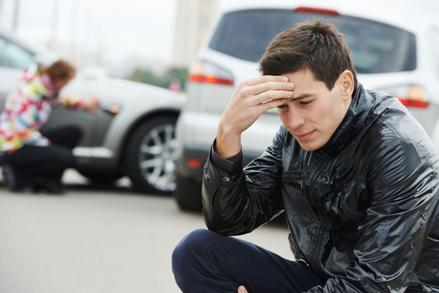Even the best drivers will sometimes find themselves in a traffic accident. It’s a distressing event, and even though you can’t plan for it to happen, you can be prepared when it does. So, if you’re involved in a collision or other traffic accident, what should you do?
Prepare in Advance
As with most accidents or disasters, the most important things you can do are actually beforehand. Being prepared for a car accident is another situation where an ounce of prevention is worth the proverbial pound of cure. To make sure you are not the one whose car creates an accident, make sure your car is running well. Don’t skip your regularly scheduled maintenance checks; have weather-appropriate tires and don’t keep driving if you see the car has a malfunctioning windshield wiper, emergency break or strange noise coming from the engine.
You should always keep proof of insurance and registration in the glove box or somewhere easy to get to, but you should also have the contact information for a towing service, and possibly an attorney, programmed into your phone as well. Attorneys like Adam S. Kutner deal with this kind of situation every day. Connect with him to find out more about what you can do to protect yourself in case of a car accident.
In addition to having a car in good condition, you’ll need to have proper safety equipment. Always keep a flashlight, flares and a first-aid kit in places that are easy to get to, even if the local law doesn’t require it.
When you move to a new state, be aware local laws may be different from what you’re used to. It is your responsibility as a driver to educate yourself, even if you aren’t required to take a test to get a new drivers’ license.
At the Scene
Even if you are fully prepared for a car accident, the shock of impact and rising emotions between collided drivers can rattle even people who are otherwise calm and decisive under pressure. First of all, if your car is still operational, immediately pull over out of the line of traffic. Put on your hazard lights and turn off the engine. Make sure any passengers you may be driving are safe and don’t require any medical attention. If they do, call emergency services immediately.
Breathe deeply and get out of the car, being careful to avoid any oncoming traffic that may not realize you have had an accident. Set flares or cones. Out of the car, carefully take stock of the damage to your automobile, if any. Call the police so someone can come to take your report and, if one or more cars are involved, communicate with those drivers and attempt first aid if anyone needs medical attention while you’re waiting for emergency services to arrive. When talking to other drivers, cyclists or pedestrians who were involved in the accident remain neutral. Do not admit fault.
Call your insurance company after you know the police and emergency services are on their way and you are confident that all people involved in the accident are receiving care. In case you are unable to call immediately because of phone service or other environmental factors, write down all of the details of the crash as completely as you can. Noting down a timeline of events, as well as a sketch of the road and collision area, will help you remember exactly what happened when you are asked to recount it later on insurance forms and in court, if it comes to that.
When emergency services arrive, they’ll evaluate your situation and whether you or your passengers have any injuries. Do not immediately say you are uninjured; many injuries from traffic accidents manifest in the days following an accident and shock may prevent you from feeling any discomfort at the moment. If the damage to your car is substantial, go to the emergency room or your family physician to get a checkup so you have official paperwork stating whether you are injured or not, and, if so, the extent of that injury.
With a little preparation and a clear plan for what to do in case of an accident, any collision you may be involved with will be less stressful for you and easier for the police, insurance and courts to resolve.
